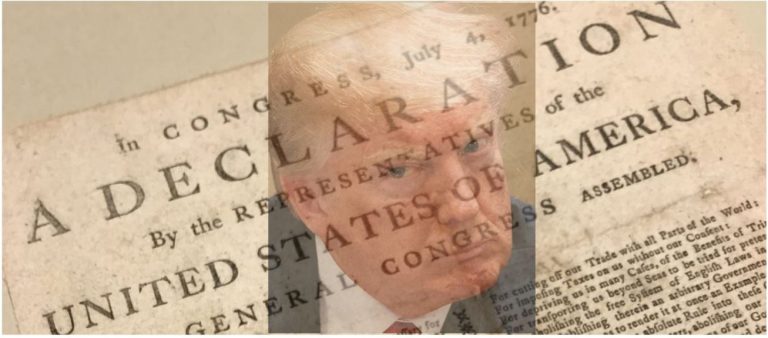Ethiopia: All That Glitters is Gold
[Author’s Note: This post first appeared in Ethiomedia on March 17, 2008 as an “editorial” without a byline. (Ethiomedia Editor’s Note – Ethiomedia will offer periodic editorial commentary on the role of the press, media and the vital necessity of free expression in sustaining democratic dialogue in Ethiopia.]
http://www.ethiomedia.com/abai/all_that_glitters_is_gold.html
“All that glitters is not gold,” penned Shakespeare. Perhaps he would not have been so sweeping in his declaration had he met Ethiopian bankers who buy and store gold worth millions of dollars in their vaults. Those crackerjack money-lenders in Addis Ababa, if the official story is to be believed, use the “duck theory” when buying gold: “If it looks like a duck, swims like a duck, and quacks like a duck, it is a duck.” By the same token, if it glitters like gold, has the shape of a gold bar, and is stamp-pressed with the word “gold”, then it is definitely gold. No questions asked!
The problem with the “duck theory” of the fake gold bars allegedly discovered in the Ethiopia bank vaults is that it sounds like a fish story, a tall tale. It just does not pass the sniff test. Theo Gray of Popular Science found the official story of the fake gold bars itself fake:
The problem is, anyone who so much has picked up one of these bars should have known immediately that they were fake, no fancy test required. The weight alone is an instant dead giveaway. Even a forklift operator lifting a palette full of them should have noticed that his machine wasn’t working hard enough. I think they must have been swapped out while in storage: Someone walked in each day with a new fake gold bar and walked out with a real one. If they were fake on arrival then everyone who handled them in any way must have either had no experience with gold or been in on the scam.”
Were bank officials suckered by con artists? Is the fake gold story a “scam” in itself? There is a lot of speculation about the fake gold affair; and conspiracy theories about what happened to the real gold are everywhere. Some have suggested the real gold never made it into the country. They say it was transshipped from the point of sale and stashed in foreign banks. Others claim the whole thing is an elaborate inside job engineered by officials and their bagmen. Still others suggest that the fake gold was sent to South Africa knowingly and deliberately to create a credible cover-up story that Ethiopian bank officials were themselves bamboozled by criminals when they acquired the fake gold. By feigning embarrassment, officials presumably hoped to lend legitimacy to their account of how the real gold bars mysteriously turned into gold-plated steel.
The official story line is that that all of the bad guys involved in the transaction have been arrested, and the matter is under investigation. The sweep up of the gold sellers, buyers, testers and those who gave final approval makes for a sensational news story, and may even provide a convenient advance set up of scapegoats to take the fall for the real guys who robbed the bank and left town long before sundown. But the official story is not convincing for two reasons: First, to believe the official line one has to accept the assumption that the gold bars were fake at the point of purchase, and the bank was a hapless victim of a massive fraud orchestrated by some bank officials and their con artist accomplices. Second, assuming that the gold bars were not fake at the point of purchase, one must believe that a crew of thieves, burglars, embezzlers and bank robbers operated inside the bank vault for a prolonged period of time without suspicion or detection, and switched the real gold bars with fake ones.
Neither of these suggestions in the official story can pass simple CSI (crime scene investigation) analysis. For the official story of fake gold bars being sold to the bank to be believable, certain assumptions must be necessarily true: 1) The purchase of the gold bars in question is the very first time the bank has ever purchased gold. 2) The bank has no idea or familiarity with the international gold business. 3) The bank purchased the gold bars not from established and reputable international gold dealers, but on the illegal black market. 4) The bank officials who participated in the gold purchase transaction have little or no experience in purchasing gold. 5) Bank officials do not use or consult local or foreign experts in the gold business when making large purchases of gold on the international market. 6) Bank officials do not conduct regular and thorough criminal background checks of individuals who are entrusted with the purchase of million dollars worth of gold; or use the services of officials and experts with the highest reputations for ethical conduct and technical knowledge in ascertaining the authenticity, purity, quality and fair price of gold. 7) The bank took possession of the gold bars from the seller without a Certificate of Authenticity attesting to the purity of the gold bars, as is customary in the gold business. 8) Bank officials, gold sellers, chemical testers, approvers and others all engaged in the dumbest and boldest conspiracy to purchase real gold with the intent to switch it later with fake ones, share the multimillion dollar loot, remain in the country, live blissfully and expect their fraud will never be discovered. This story line just does not hold water.
Similarly, the old switcheroo story about the real gold bars being swapped for fake ones in the vault to be credible and convincing certain assumptions must be necessarily true: 1) The bank does not have policies and procedures for the registry and secure depository of its gold bars. 2) The bank does not practice regular and periodic inspection of its gold holdings, including random sample testing of its gold bars. 3) There was a clandestine and experienced theft ring, operating inside the bank for a long time which was familiar with the bank’s security practices that managed to accomplish the incredible fake gold swap. 4) The same theft ring is quite possibly responsible for a yet undetected disappearance of an undetermined amount of cash from the bank over an unknown period of time. 5) There was a massive conspiracy of top and midlevel bank officials working hand-in-glove with a crew of con artists and thieves who made off with tons of gold in broad daylight, or under cover of darkness. 6) Bank officials at the top were not only grossly incompetent but also recklessly and criminally negligent in their fiduciary duties. In short, it is illogical to believe that pallets of gold bars were switched by fake ones in the vault without anyone being aware of it, or someone in the know turning a blind eye.
If millions of dollars were lost in the purchase of fake gold bars, we would be dismayed and saddened by the official incompetence, negligence or corruption that may have caused it. It would be a serious financial blow to Ethiopia. But we do not know if there were indeed real gold bars in the first place, or whether someone switched them for fake ones in the vault. Certainly, we do not presume any wrongdoing on the part of any bank professionals. As far as we are concerned, the official story about the fake gold bars only confirmed what we had known and believed all along: There is not a pot of gold at the end of the rainbow, or in the Ethiopian bank vaults. Regardless, we are infinitely more concerned about fake opposition political parties, fake elections, fake justice, fake democracy and fake human rights, than fake gold. We prize freedom, democracy, human rights and justice in Ethiopia more than all gold in the world. That is why our motto is, “Keep your eyes on the prize.”



